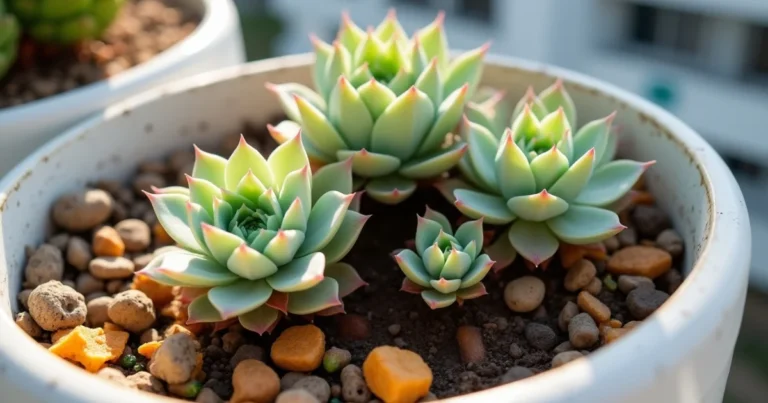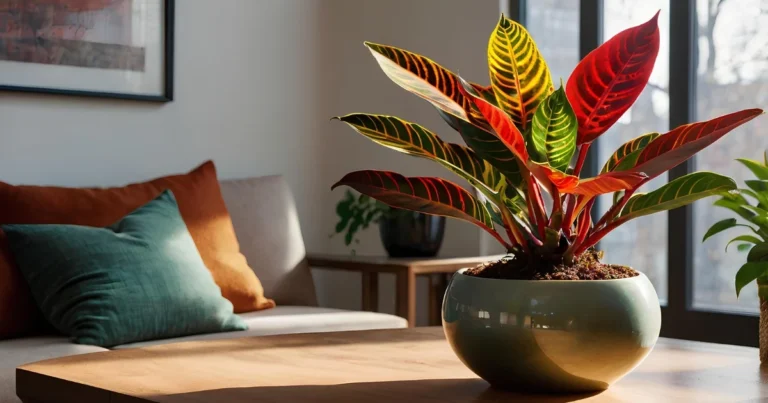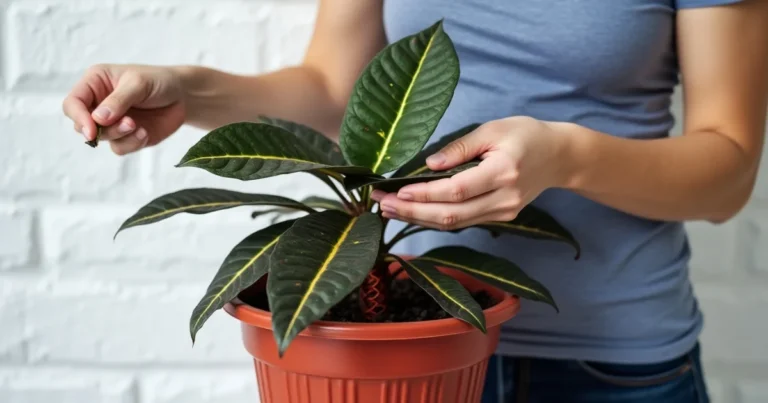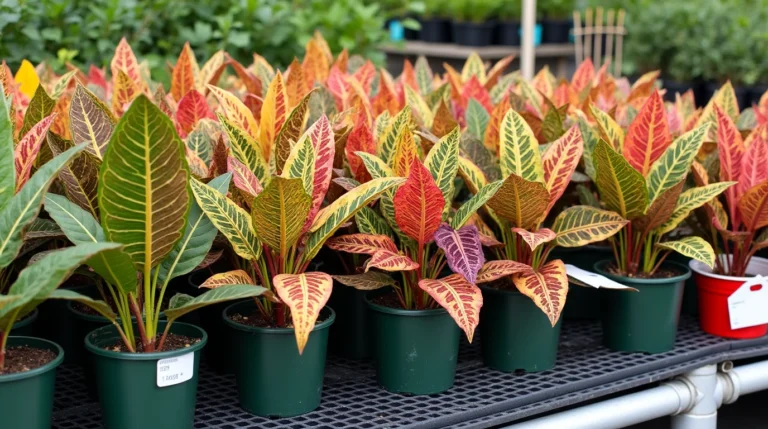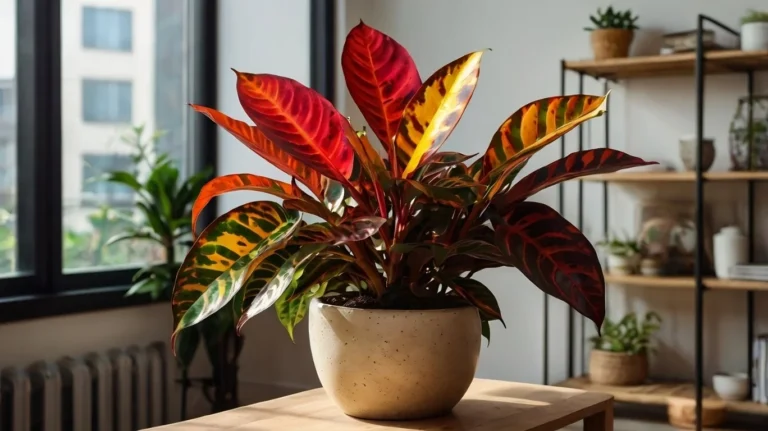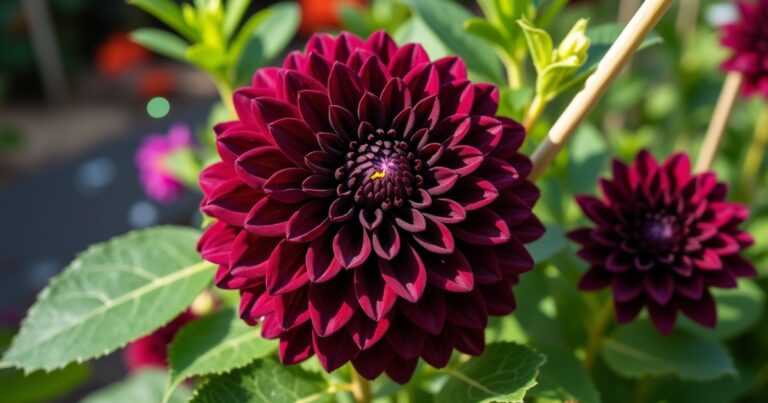Shrimp Plant Care: Effortless Tips for Growing Stunning Blooms
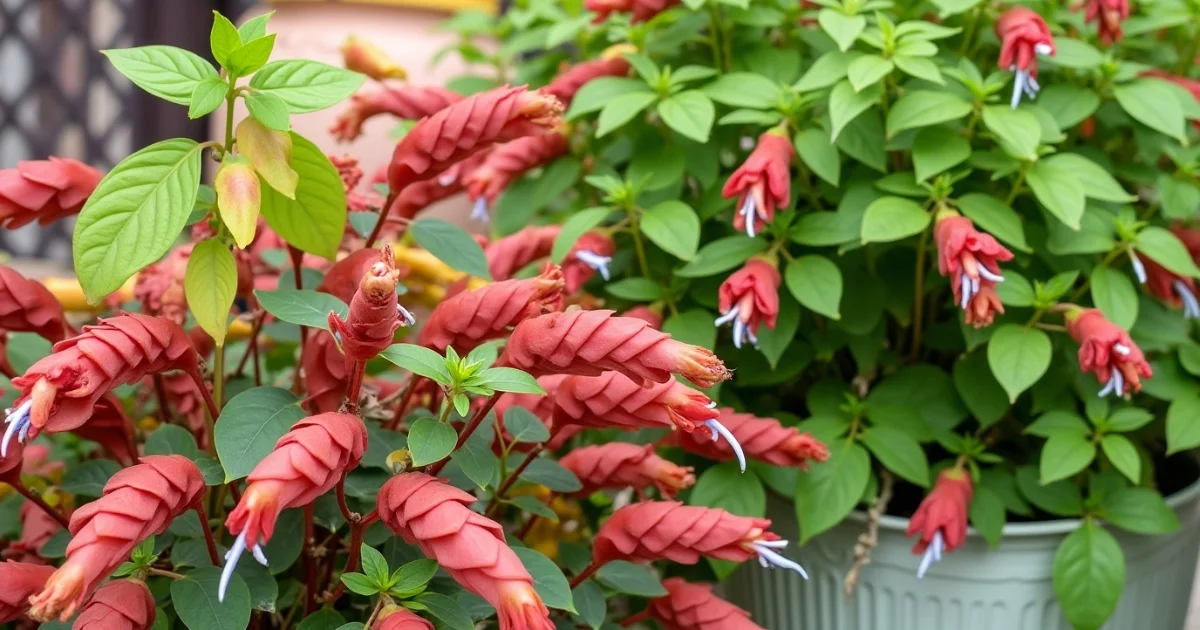
If you’re looking for a plant that brings a splash of tropical charm to your garden, the shrimp plant (Justicia brandegeeana) is a showstopper. With its whimsical, shrimp-shaped bracts in shades of red, yellow, golden, and even blue, this plant is a magnet for hummingbirds and butterflies. But to keep it thriving and bursting with color, you’ll need to give it the right care.
But here’s the catch: without the right shrimp plant care, those striking blooms may fade, and its lush foliage can quickly turn leggy and weak. Whether you’re growing a planted shrimp in a garden bed or keeping one indoors, mastering its care is the key to maintaining a continuous display of dazzling color.
In this guide, we’ll break down everything you need to know about the care of a shrimp plant, so you can enjoy its vibrant display all year long. Let’s dig in!
Table of Contents
What Is a Shrimp Plant or Justicia Brandegeeana?
The shrimp plant is a tropical evergreen shrub native to Mexico and Central America. It belongs to the Acanthaceae family and is admired for its unique, overlapping bracts that resemble shrimp shells. These bracts surround small white flowers that bloom year-round in warm climates.
Common Shrimp Plant Colors & Varieties:
It come in a variety of striking colors:
- Red Shrimp Plant – The most popular variety with deep reddish-orange bracts.
- Yellow Shrimp Plant – Features bright yellow bracts, also known as the golden shrimp plant (Pachystachys lutea).
- Blue Shrimp Plant – A rare variety with bluish-purple tones, often found in tropical gardens.
Each variety thrives in warm, humid conditions, making them excellent choices for gardens, patios, and indoor spaces with sufficient light.
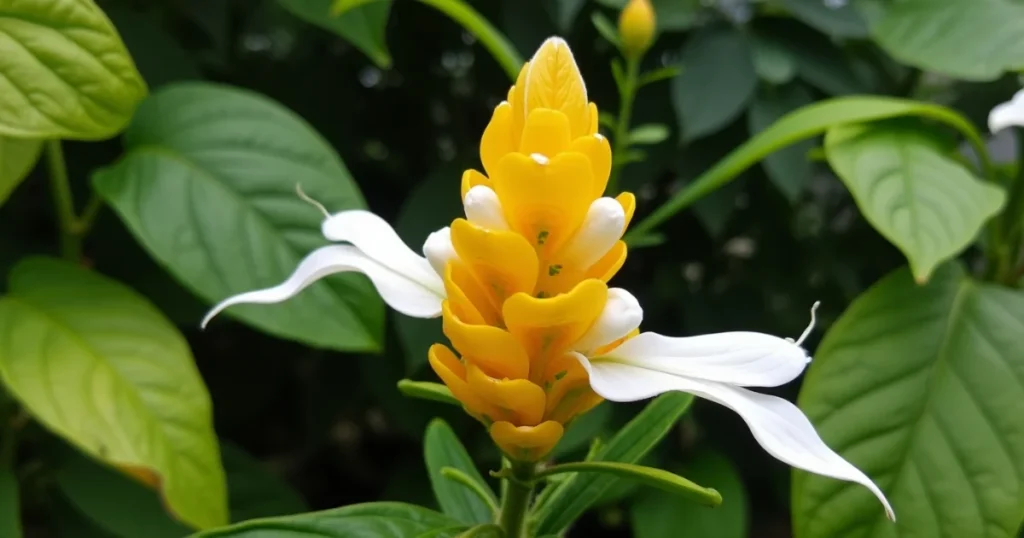
Ideal Growing Conditions for a Thriving Shrimp Plant:
Light Requirements
Shrimp plants flourish in bright, indirect sunlight but can also tolerate partial shade. For best results:
- Place outdoor shrimp plants in a spot with morning sun and afternoon shade to prevent leaf burn.
- If growing indoors, position them near a south- or west-facing window for at least 4-6 hours of sunlight daily.
Soil Preferences
Healthy growth depends on nutrient-rich, well-draining soil. Ideal soil mix:
- Loamy soil with good aeration.
- A blend of peat moss, compost, and perlite for moisture retention and drainage.
- A slightly acidic to neutral pH (6.0–7.5).
Temperature & Humidity:
- These plants prefer warm temperatures between 65–80°F (18–27°C).
- Avoid exposure to temperatures below 50°F (10°C) as cold weather can cause leaf drop.
- Maintain high humidity levels (50–70%) by misting the leaves or using a humidity tray indoors.
How to Plant and Propagate Shrimp Plants:
Step-by-Step Guide to Planting Your Plant:
- Choose the Right Spot – Select a well-lit area with indirect sunlight
- Prepare the Soil – Ensure the soil is loose, fertile, and well-draining.
- Create a hole that’s just a bit larger than the root ball.
- Plant and Water – Place the plant, backfill the soil, and water thoroughly.
- Mulch Around the Base – Helps retain moisture and prevents weeds.
Propagation Methods:
Justicia brandegeeana are easily propagated through cuttings or seeds:
- Stem Cuttings: Take a 4–6-inch cutting from a healthy plant, remove lower leaves, dip in rooting hormone, and plant in moist soil.
- Seeds: Less common but can be sown in warm, moist soil for germination.
Common Mistakes to Avoid:
- Overwatering – Can lead to root rot.
- Insufficient Light – Results in weak, leggy growth.
- Skipping Pruning – Causes uncontrolled growth with fewer flowers.

Watering and Feeding: Keeping Your Shrimp Plant Healthy
How Often to Water a Your Plant:
- Water the plant when the top layer of soil becomes dry to the touch.
- Reduce watering in winter to prevent overwatering.
- Use room-temperature water to avoid shocking the roots.
Best Fertilizers for Promoting Blooms:
- Use a balanced liquid fertilizer (10-10-10) once a month during the growing season.
- For enhanced flowering, opt for a phosphorus-rich fertilizer (e.g., 5-10-5).
Signs of Overwatering or Underwatering:
- Overwatering: Yellowing leaves, root rot, and moldy soil.
- Underwatering: Wilting leaves, slow growth, and brittle stems.
Pruning and Maintenance for Lush Growth:
Why and When to Prune Your Plant:
Regular pruning keeps the plant compact and encourages fresh blooms. Best practices:
- Trim dead or leggy stems in early spring to shape the plant.
- Remove faded bracts to prolong blooming periods.
Deadheading for Continuous Blooming:
Deadheading (removing spent flowers) promotes new flower production and prevents energy waste on seed formation.
Seasonal Care Tips:
- Spring/Summer: Increase watering and fertilization.
- Fall/Winter: Reduce watering, avoid fertilizing, and move indoor plants away from drafts.
Common Pests and Diseases Affecting Your Plant:
Identifying Common Pests:
Flowers can attract:
- Aphids – Small, sap-sucking insects causing curled leaves.
- Spider Mites – Webbing and yellow spots on leaves.
- Whiteflies – Tiny, winged insects found under leaves.
How to Treat Pests and Diseases:
- Use neem oil or insecticidal soap to eliminate pests.
- Remove infected leaves and improve air circulation.
Organic and Chemical Solutions for Pest Control:
- Organic: Neem oil, ladybugs, and garlic spray.
- Chemical: Mild insecticides for severe infestations.
Growing Plants Indoors vs. Outdoors:
Indoor Care Tips:
- Keep near a bright window with filtered sunlight.
- Mist regularly to maintain humidity.
- Rotate the plant occasionally for even growth.
Outdoor Considerations:
- Plant in well-draining beds or pots.
- Protect from frost by bringing indoors during winter.
Troubleshooting Common Challenges:
- Leggy growth? Move to brighter light and prune regularly.
- No flowers? Increase phosphorus fertilizer and deadhead spent blooms.
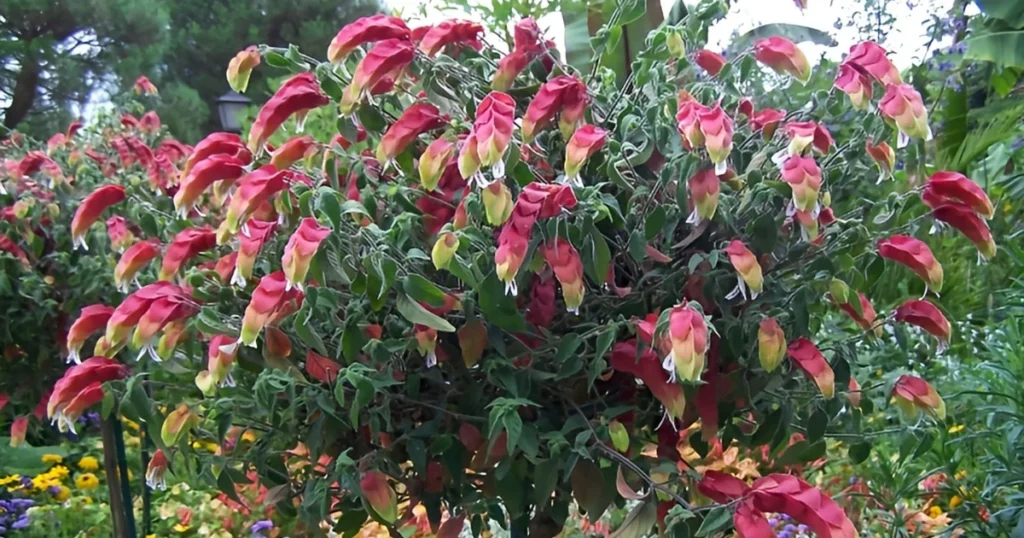
Final Tips for a Stunning Your Plant Display:
Creative Landscaping Ideas:
- Use shrimp plants as border plants or container accents.
- Pair with tropical plants like hibiscus and bird of paradise.
How to Maintain Year-Round Blooms:
Prune consistently, fertilize wisely, and provide adequate sunlight.
With the right shrimp plant care, your garden or indoor space can stay vibrant with colorful blooms all year long.
Conclusion:
Caring for a shrimp plant is easier than you think—just give it the right balance of sunlight, water, and nutrients, and it will reward you with stunning, shrimp-like blooms year-round. Whether you choose the red, yellow, golden, or even blue shrimp plant, keeping up with pruning, proper soil conditions, and pest control will ensure lush growth and continuous flowering.
Now that you know the secrets to shrimp plant care, it’s time to put them into action! Will you grow yours indoors for a tropical touch or outdoors for a pollinator-friendly display? Start planting today and watch your Justicia brandegeeana
flourish!
💬 We’d love to hear from you! Drop a comment below with your shrimp plant success stories, questions, or tips.
Let’s grow together!
FAQs:
What is the real name of the Shrimp Plant?
The real name of the shrimp plant is Justicia brandegeeana. It is part of the Acanthaceae family and is native to Mexico and Central America. While it is often called the shrimp plant due to its unique, shrimp-like bracts, this plant can also be known as the Mexican shrimp plant or false hop.
What is the Shrimp Plant used for?
The shrimp plant is primarily used for ornamental purposes. Its vibrant, shrimp-shaped bracts add a pop of color to gardens, patios, and indoor spaces. It’s also known for attracting pollinators like hummingbirds and butterflies, making it a popular choice for gardeners looking to create a wildlife-friendly environment. Additionally, it can be used in landscaping for border plants or as container plants to bring a tropical feel to any space.
Is a Shrimp Plant a houseplant?
Yes, the shrimp plant can be grown as a houseplant. It thrives indoors, especially when placed in a spot with bright, indirect sunlight. It also requires high humidity, which can be maintained through regular misting or humidity trays. Many people grow it indoors to add a tropical vibe to their homes, and with proper care, it can bloom year-round.
How do I identify a Shrimp Plant?
The shrimp plant is easy to identify thanks to its unique, shrimp-shaped bracts that come in vibrant shades like red, yellow, golden, or even blue. These bracts surround small white tubular flowers and create a striking visual effect. The leaves of the plant are glossy, dark green, and ovate. Its overall appearance is bushy, with the bracts forming clusters at the tips of the stems, which is a distinguishing characteristic.
What is the spiritual benefit of the Shrimp Plant?
In some cultures, the shrimp plant is believed to bring positive energy and enhance spiritual well-being. It is thought to represent growth and transformation, symbolizing the blossoming of potential and creativity. The vibrant colors are believed to uplift the mood and promote a sense of peace and tranquility. In feng shui, the plant is said to bring good fortune and balance to the environment, especially when placed in areas that need energy or focus, such as a living room or creative space.

